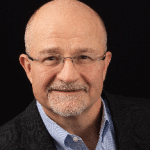Following up on Susannah Fox’s superb summary of Medicine 2.0 Day One, I would like to offer some overview and comments about day two.
This was my first Medicine 2.0 meeting. I had heard a lot about Gunther Eysenbach, MD, MPH, and his merry band of “disruptors” but I had never seen this group in action until this past weekend. Susannah was so right. What an amazing group of international e-Patient advocates! People from all over the world offered updates on their research advancing the cause of connectivity and patient empowerment. Kudos to Gunther for a smooth and informative conference. Tom Ferguson would have been proud!
Starting backwards from the closing keynote by our own e-Patient Dave DeBronkart, all I can say is WOW! Dave’s talk was titled “Gimme My Damn Data, Three Years On: What’s Changed and What Hasn’t.” Without a doubt e-Patient Dave has become the face and voice of Participatory Medicine. Dave rallied the audience to move the revolution forward. A powerful slide from Engelen, Derksen 2010 portrayed the health landscape of Medicine 1.0 as information flowing from Institutes to Individuals and Medicine 2.0 as a more interactive two way street. Medicine 3.0 and 4.0 will look more like an interconnected web of patients and health professionals trading information freely back and forth seamlessly.
Dave cited Gunther’s research succinctly: “Death by Googling: Not. “It may be more dangerous NOT to google your condition.”
The Blue Button Download My Data movement/revolution is gathering momentum. By the summer of 2011 a million people (veterans & Medicare users) have registered.
Memorable quote from Clay Shirky, a serious internet visionary: “Giving patients access to their medical records will just naturally improve the quality of what’s in there. It’s like the way you clean up when you know company’s coming.”
And Dave played his now infamous video: http://tinyurl.com/8gcpsdv
Dave talked up mobile devices to improve health outcomes such as Withings blood pressure monitors and scales and FitBit. By the way, he’s lost 29.6 pounds over the summer!
Dave received a standing O with his uplifting message: Let Patients Help – Let Patients Help – Let Patients Help!
There were so many other great presentations it is impossible to list them all. For me, Brian Alper’s talk from EBSCO Publishing was powerful. Question: How quickly does core evidence change? About 20% each year! How many clinicians can keep up?
Megan Ranney, MD, MPH, from Brown & Rhode Island Hospital led a fabulous panel discussion about how emergency physicians can start using social networks & technology to improve emergency preparedness and response and enhance doctor-patient communication.
Personal Health Records are now live for everyone in Alberta, Canada. The story of how this province asked what Albertan’s wanted and implemented the plan is inspiring to all those who believe patients (like e-Patient Dave) deserve their Damn Data! I only wish they included clinic notes in the plan.
There is no room for an in-depth overview of other presentations, though there were many brilliant ones. The keynote on Sunday morning by John Brownstein, was also terrific. Digital Disease Detection was the title and it represents the wave of the future in public health. Using a variety of Internet technology tools, Dr. Brownstein demonstrated how we can get a jump on a variety of diseases earlier than ever before. I was especially enamored by his new app, MedWatcher, which is a great way to get data to the FDA without dealing with the cumbersome electronic format the Food and Drug Administration created with its MedWatch system.
All in all Medicine 2.0 was another step forward in implementing the revolution that is gathering momentum. Get on board!






Thanks, Joe! It was great to meet you, too. What a great conference. I’m excited to see where this movement takes us all. :)
Ha – “Gunther Eysenbach, and his merry band of disruptors” – I love it!
Thanks for this nice summary and for spreading the word. It was great to have you, and welcome to the Medicine 2.0 community.
I look forward to see you again at Medicine 2.0’13 in London Sept 23-24, 2013.
It is true that the movement is gaining momentum, as evidenced by over 500 innovators attending this years’ conference, showcasing and discussing disruptive technology and research, but I am not satisfied until the “band of disruptors” is in the thousands, so there is little to add to your call to action “get on board!”
It was my third Medicine 2.0 meeting and always with the same great interest: inspiring presentations,innovations and challenging panels. Looking forward to London where I hope we can continue our conversation about information on medication.